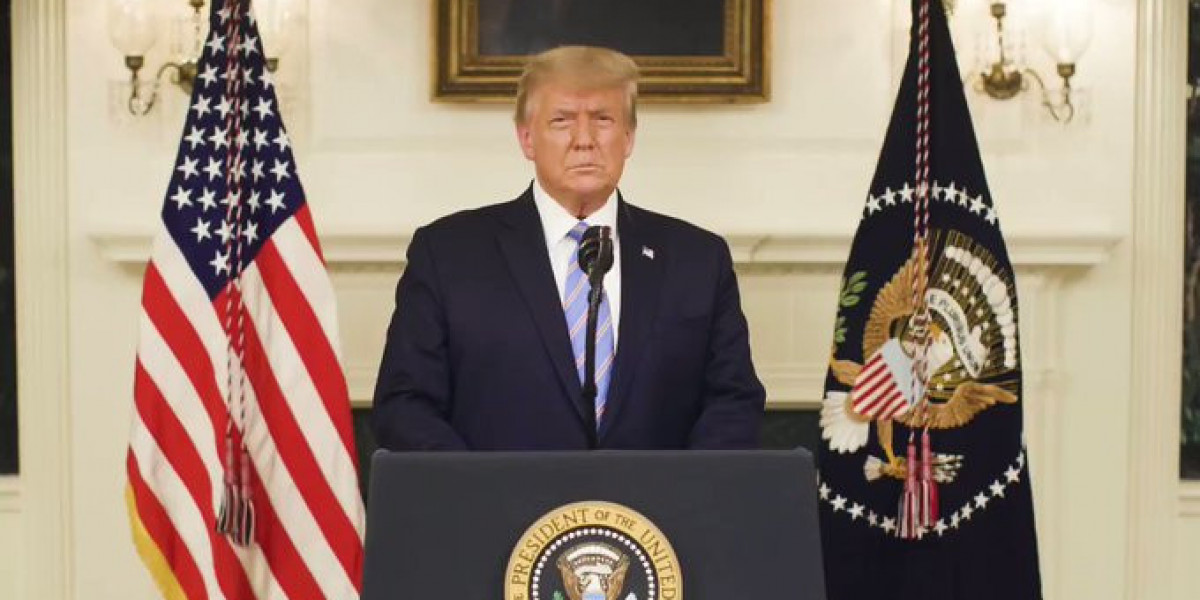Introduction
In a bold move reshaping the landscape of global trade, former President Donald Trump, now seeking another term in office, announced the implementation of reciprocal tariffs in 2025. These tariffs are designed to match the import duties that other countries impose on U.S. goodssignaling a shift toward more protectionist trade policies. The announcement has sent shockwaves through global markets, sparked political debate, and stirred fears of a new trade war era.
This article explores the details of the policy, its intended goals, potential economic consequences, and the diverse international responses it has provoked.
What Are Trump's Reciprocal Tariffs?
The reciprocal tariffs policy introduced in 2025 mandates that the United States will now impose tariffs on imports that are equivalent to the tariffs those countries place on American exports. The policy aims to ensure "fair trade" and eliminate what the Trump administration calls "unjust trade imbalances."
Key Highlights:
A baseline 10% tariff is applied to most imports.
Countries with high trade surpluses or perceived unfair practices face higher tariffs, with China seeing hikes up to 125%.
Some sectors, especially technology, textiles, and automotive, are expected to be hit the hardest.
Why Trump Introduced These Tariffs
The rationale behind the 2025 reciprocal tariffs stems from years of U.S. trade deficits and concerns that American industries are being undercut by low-cost imports from countries with little to no reciprocal market access.
Objectives of the Policy:
Reduce the massive U.S. trade deficit.
Encourage domestic manufacturing.
Counter what is described as "predatory" trade practices, particularly by China.
Force trading partners to lower their tariffs to avoid losing access to the lucrative U.S. market.
Economic Impact on the U.S.
While the policy is framed as pro-American, its actual economic implications are complex and multi-dimensional.
Pros:
Could boost domestic manufacturing in sectors like steel, aluminum, and electronics.
Creates pressure on countries to negotiate more favorable trade deals.
Appeals to American workers in industrial states, a key voting bloc.
Cons:
Higher costs for imported goods, which may lead to consumer price inflation.
U.S. companies reliant on global supply chains may suffer from increased input costs.
Risk of retaliatory tariffs on American exports, which could hit farmers and manufacturers.
Impact on Global Markets
The announcement caused immediate volatility in global stock markets, as investors fear the start of a new trade war. Global supply chains that have become increasingly integrated over the past two decades are now facing disruptions.
Global Economic Risks:
Supply chain reconfigurations.
Increased cost of raw materials and components.
Delayed international projects.
Reduced investor confidence in emerging markets.
Industry-Specific Effects
Technology:
Companies like Apple, Tesla, and Microsoft rely heavily on global component sourcing. These tariffs could significantly raise production costs, which might be passed on to consumers.
Agriculture:
U.S. farmers may become collateral damage if countries retaliate with tariffs on American soybeans, corn, dairy, and meat exports.
Manufacturing:
Some industries could benefit from reduced foreign competition, but others that rely on imported machinery or components may suffer.
International Reactions
The reciprocal tariff policy has received mixed reactions across the globe, ranging from outrage to cautious optimism.
European Union:
The EU warned that such protectionist policies could destabilize the global economy. Discussions are already underway for potential countermeasures.
China:
Beijing responded swiftly with mirror tariffs, igniting fears of a full-scale US-China trade conflict. Analysts expect prolonged tension unless a new deal is negotiated.
India:
India faces moderate tariffs under the new structure. While some sectors could suffer, others may benefit as competitors like China and Vietnam face even steeper rates.
Australia:
Australian officials expressed concern that the tariffs could shrink global demand, affecting their export-heavy economy. The commodities sector, especially iron ore and coal, is at risk.
Political Implications
Trumps move is not just economicits political. With the 2025 election looming, this bold policy appeals directly to working-class voters who feel left behind by globalization.
Electoral Strategy:
Strengthens Trumps America First brand.
May pressure other candidates to clarify their trade stances.
Could become a central issue in debates over globalization vs. nationalism.
What Happens Next?
The administration has announced a 90-day pause for most countries (except China) to allow for negotiations. If foreign governments reduce their tariffs, the U.S. may reciprocate. If not, expect a second wave of tariff hikes after July 9, 2025.
Potential Scenarios:
Best Case: Countries negotiate, lower their tariffs, and a new balance is struck.
Worst Case: Escalation into a global trade war, causing long-term economic damage.
Likely Outcome: A mix of compromises, short-term disruptions, and strategic realignments in trade partnerships.
Conclusion
Trumps 2025 reciprocal tariffs mark a dramatic shift in U.S. trade policy. While the goal of protecting American industries and workers is clear, the economic and diplomatic consequences remain uncertain. Whether these tariffs lead to fairer trade or a fractured global economy depends on the decisions of world leaders in the coming months. As the international community watches closely, one thing is certainglobal trade will never be the same.
Read More: Trump Tariffs.









